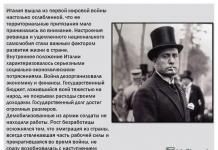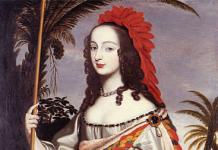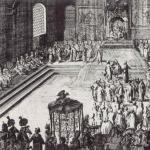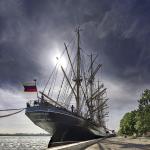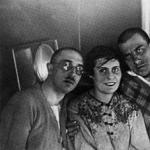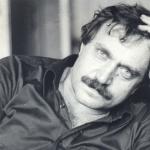Italy became the first country in which the fascists came to power.
The reasons for this were:
1) difficult socio-economic situation after the war (heavy losses - 700 thousand killed, 1/3 of national wealth was lost, huge expenses for the war, foreign debt) and the post-war crisis;
2) participation in the war did not bring the expected profit (“lost victory”), they were unable to achieve satisfaction of one of their main demands - the annexation of the promised territories to it - the growth of chauvinistic and nationalist sentiments, especially in the army and among former front-line soldiers;
3) an acute political crisis, the weakness of parliament, the ruling liberal party (Giolitti), which did not have an absolute majority in parliament;
4) 1919 - 1920 - years " red biennium" - mass strike struggle, up to the seizure of enterprises by workers, the growing influence of left parties - socialists and communists;
5) the king, the big bourgeoisie, and agrarians needed strong power that would guarantee them stability;
6) low standard of living and political culture of the population, a lot of unresolved social problems. The people were tired, they wanted stability, a quick solution to their problems.
All this was promised to be done by the National Fascist Party, which emerged in 1921, led by Benito Mussolini. They promised everyone, everything, at once.
As a result, on October 28, 1922, there was a “march of fascist troops against Rome.” Mussolini was appointed head of government, and the process of gradual transition to fascist dictatorship. In 1924 In the parliamentary elections, which were partly rigged, the National Fascist Party won.
Over the next three years, a number of events were carried out, a number of laws were adopted, which meant a restriction of democracy and a transition to dictatorship. IN 30s The image of Italian fascism as a totalitarian system finally emerged.
In the 30s, the appearance of Italian fascism as a totalitarian system finally took shape:
1) the government received the right to issue decrees having the force of law (becomes the central body of both the executive and legislative powers);
2) the parliament was not dissolved, but essentially did not act, and in 1939 it was replaced by the Great Fascist Council;
3) after the assassination attempt on Mussolini - emergency laws that prohibited all democratic freedoms (all political parties except the fascist one, opposition newspapers, free trade unions and strikes);
4) a secret police was created, a special tribunal was created, and the death penalty was introduced;
5) the functions of local authorities were transferred to prefects appointed from above;
6) in the hands of El Duce - the post of head of government, chief of internal police, head of the fascist party and a number of other ministerial posts;
7) fascist trade unions, children's and youth organizations of a paramilitary nature, and sports societies were created. Every second Italian, regardless of gender and age, was a member of some association under the control of the fascist party;
8) the media and all types of cultural activities were under the control of the Ministry of Popular Culture.
The monarchy was preserved, with the passive position of the king. Mussolini declared himself a faithful servant of the king and the monarchy.
He himself called his regime totalitarian, in which the state controls all aspects of the life of the state. The new morality consisted in the complete subordination of the interests of the individual to the fascist state; the nation, leader and family were put at the head of propaganda. War was portrayed as the pinnacle of life for a nation and an individual; during war, the best qualities of a person are revealed - his combat effectiveness, obedience, morality.
Fascism according to Mussolini - constant revolution, whose goal is to renew Italy.
1929 - agreements were concluded between the Italian state and the Pope 3 Lateran agreements, which determined the international legal status Vatican, the relationship between church and state and regulated the financial relations of the parties.
Italy recognized the Vatican as an independent state, paid it a large sum, pledged to support Catholicism and perform its rituals, the church was given greater rights in matters of family and school. In return, the Vatican renounced its claims to Rome, recognized the fascist regime and did not condemn it. This was very important for Mussolini and strengthened his position.
As a result of the economic crisis of 1929-1934, government regulation became broad and comprehensive. In conditions of crisis, Italian fascism began to implement its main social experiment - corporate system (building a corporate state in which class harmony and social peace reign).
In 1930-34, corporations were created in all sectors of industry, trade, agriculture, and services; they included everyone who was involved in this area. The corporate system became one of the levers of fascist state regulation of the economy.
Support for the regime was facilitated by its social policy. The previously existing system of social insurance and pensions was expanded and supplemented by the introduction of new insurance (sickness, disability and unemployment, maternity protection, benefits stimulating an increase in the birth rate).
To some extent, fascism contributed to the modernization of the Italian economy, but Italy never reached the number of the strongest industrialized countries. The reality did not correspond to the ambitions of the fascist regime - the re-creation of the Great Roman Empire and the transformation of the Mediterranean into an inland Italian sea.
Mussolini, without a doubt, was a charismatic personality, possessed of a keen political sense, a tenacious grasp, a gift of orator, and knew how to impress the audience as a charming and energetic leader, coming from the people.
Unlike Germany:
1) there was no such strict regime - mass extermination of people, concentration camps and gas ovens. BUT! arrests and persecution of anti-fascists, long prison sentences;
2) Italians were declared one of Aryan races , the “purity” of which must be protected in every possible way. Persecution of persons of non-Aryan, primarily Jewish, origin began. There was no wholesale extermination of the Jewish population, but their civil rights were limited (to marry with them, to teach and hold scientific positions, to serve in government institutions, their children had to be educated separately from other students, in special classes, they were not subject to conscription into the army and were restricted in their rights to real estate);
2) some economic freedoms were maintained;
3) cooperation with traditional social and political institutions(cadre army, monarchy, church, tribal aristocracy).
4) the party did not completely replace the state, but performed the most important organizational and ideological function (“the party acts on the orders of the leader and is in the service of the fascist state”).
Etymologically, "fascism" comes from the Italian "fascio" (league), as well as from the Latin "fascia" (bundle), it is an ancient symbol of the Roman administration. Benito Mussolini, driven by the idea of restoring the Roman Empire, after the First World War chose the fasces as a symbol of his party, which is where its name fascist came from.
Italy emerged from the First World War so weakened that its territorial claims were little taken into account. Moods of revenge and injured national pride became an important factor in the development of life in the country. The internal situation in Italy was characterized by serious socio-economic upheavals. The war disorganized the economy and finances. The state budget, which fell heavily on the people, did not cover expenses with its income. The national debt has reached enormous proportions. Soldiers demobilized from the army did not find work. The growth of unemployment was complicated by the fact that emigration from the country, which always diverted part of the labor force and stopped during the war, did not immediately resume with the onset of peace.

Class contradictions and class struggle sharply intensified. The events of the Great October Socialist Revolution in Russia found a wide response among the Italian working masses. The first post-war years () were a time of strong revolutionary movement for Italy. Its culmination was the mass protests of workers in August - September 1920, when Italian metalworkers, and then workers from other industries, began to seize factories and factories throughout the country. These events brought the proletariat close to resolving the question of power. Great October Socialist Revolution

But the Italian Socialist Party and the General Confederation of Labor did not show sufficient revolutionary spirit and determination at that time and did not lead the movement. But the centrists who dominated the party, frightened by the scale and nature of the struggle, did not stand at the head of the masses. Left to their own devices, deprived of leadership, the workers were unable to seize power. The movement came to a standstill and froze. The bourgeoisie understood perfectly well why it managed to hold out. “Italy was threatened with disaster,” wrote the influential bourgeois newspaper Corriere della Sera. “The revolution did not occur not because anyone blocked its path, but because the General Confederation of Labor did not want it.” Mussolini in Italian military uniform, 1917

The desire of the monopolists to maintain their class rule at any cost was reflected in the fact that they hastened to organize forces in advance that could prevent a new outbreak of revolutionary struggle, carry out a preventive counter-revolution and, moreover, use the growing revolutionary anger of the people for their own class purposes. Fascism became such a force - a spokesman for the interests of the most aggressive circles of the monopoly bourgeoisie, a weapon in its hands in the struggle against the proletariat, the working masses and the progressive intelligentsia. "The Face of Fascism" Photomontage by artist D. Hartfield

B. Mussolini became the organizer of the first fascist detachments and then the leader of the fascist movement in Italy. Expelled from the Socialist Party at the beginning of the First World War, he was one of the leaders of the movement for Italy's entry into the war. Mussolini founded his newspaper "People of Italy" ("Pppolo d" Italia"), the pages of which were filled with loud militaristic propaganda during the First World War. "The neutrals do not move events, but obey them. Only blood gives running to the ringing wheel of history." The same combination of fierce nationalism with social demagogy was characteristic of the activities of the fascist organization created by Mussolini in March 1919, called the "Union of Struggle" ("Fascio di combattimento") 2. At first, the organization consisted of only a few dozen people, but gradually began to expand its ranks, mainly due to former front-line soldiers. Publishing house of the newspaper “IL popolo dItalia”

At first, the fascists recruited their supporters, hiding behind foreign policy slogans and trying to present themselves as defenders of “national interests.” Mussolini and other fascist leaders portrayed the matter as if the whole world (and most of all the rulers of the Entente countries) were infected with hatred of Italy, which was surrounded by enemies, and the government was showing criminal weakness and lack of will. The fascist bosses assured that only fascism could put an end to this. From curses addressed to former allies, the fascists moved on to curses against “rotten democracy,” “incapable and corrupt parliamentary talkers and demagogues,” who were declared guilty of all the foreign and domestic political troubles of Italy. An eagle with fascia in its paws is one of the symbols of fascism. Used on members' caps

Fascism tried to recruit to its side, first of all, the most unstable elements of young people returning from the front, who had achieved various ranks and honors in the war, and were not going to engage in the humble work of clerks, teachers, technicians, and petty lawyers. Crackling phrases, spectacular gestures, absolute political unprincipledness - everything that the fascist leaders had in abundance attracted these young people, who were ready to do anything, just not to pull the burden of a prosaic existence. The sharp strengthening of fascism began after September 1920, when it was supported by the big bourgeoisie, and he placed his armed units at their disposal. Pogroms of workers and democratic organizations began, beatings and murders of political and trade unionists, and terror and violence reigned in the country. Emblem of the National Fascist Party

The Italian Communist Party, formed in January 1921, took the path of a decisive struggle against fascism. Anti-fascists joined them regardless of class and political affiliation. However, this embryonic form of an anti-fascist united front did not lead to unity even in the labor movement. Mussolini and the Blackshirts during the March on Rome in 1922

The unorganized anti-fascist front was opposed by the fascist party with its armed detachments of blackshirts, who enjoyed the full support of the bourgeois-democratic government, military authorities, police, courts and the big bourgeoisie. Workers and peasants were disarmed, and the fascists openly carried weapons. The police, at best, remained passive, but more often they directly supported the fascists. The courts handed down harsh sentences to workers who were attacked by the Blackshirts, who were acquitted. A fascist detachment of Blackshirts is sent to beat up the workers. Rome

The army and government agencies knew about the fascists' intentions to seize power. However, the government did not take any measures to stop the fascists on their way to seizing power. And it was difficult to expect this after for almost two years the successive “liberal” and “democratic” governments of Italy condoned and helped the fascists. The open transfer of power into the hands of fascism took place in 1922. On October 28, a fascist coup was carried out, which Mussolini called the “Great March on Rome.” With this, the Duce wanted to create the appearance that the fascist detachments had to break the armed forces opposing them. "March on Rome" by Italian fascists led by Mussolini.

Immediately after the coup, despite the preservation of parliamentary forms, two new state institutions appeared: in December 1922, the “Grand Fascist Council” (BFC) and in January 1923, the “Voluntary Militia of National Security” (VMNS). The BFS was organized on the basis of the directorate of the fascist party with the addition of fascist ministers and some fascist leaders personally appointed by Mussolini, who became the chairman of the BFS. This council controlled bills before introducing them into parliament, and the activities of the government itself. By creating the DMNB, Mussolini sought to achieve the predominance of the executive power, represented by the fascist government, over the legislative power, represented by the king and parliament. The transfer of the DMNB to Mussolini strengthened his personal power. Italian fascist militia squad

After the fascist coup, communists and socialists organized separate protests by workers, mainly strikes. An aggravation of the political situation occurred in the summer of 1924. Deputies of opposition parties left parliament and formed the so-called “Aventine bloc”. The Communist Party proposed that the liberal-democratic and socialist leaders of the bloc unite and begin the fight against fascism. Philosopher Giovanni Gentile one of the fathers of Italian fascism

In January 1925, Mussolini announced his firm intention to curb all opposition by force. This was the signal for the start of a new fascist offensive aimed at eliminating the remnants of bourgeois-democratic freedoms. In June, at the congress of the fascist party, Mussolini proclaimed the desire of fascism to transform the moral and political consciousness of Italians into a monolithic and totalitarian consciousness: “We want to fascist the nation... Fascism must become a way of life... there must be Italians of the era of fascism, as there were, for example, Italians Renaissance". It was here that fascism’s desire to create an empire was first announced. Mussolini and Hitler

The law of April 1926, which established government control over trade unions, was of particular importance in strengthening the fascist dictatorship. After the assassination attempt on Mussolini at the end of October, on November 5, 1926, a law was issued to dissolve all “anti-national” parties, which formally completed the transition to a one-party system. In April 1927, the so-called “Charter of Labor” was adopted, which established the corporate principle of the structure of the state and society of Italy. Instead of class trade unions, corporations were created that united workers and entrepreneurs in each branch of production. These corporations, under state control, were to become the cornerstone of fascist statehood. Differences between Italian and German fascism

Only corporations could now nominate candidates for parliament. After the candidates were approved by the “Great Fascist Council”, they were included in the voting lists. Thus, the opposition had no opportunity to confront fascism in the parliamentary field. The mechanism of the completed fascist dictatorship included party, as well as trade union, youth, student, women's and sports organizations. Like a web, they entangled all layers and groups of the population of the fascist state and society. The fascist doctrine was based on the idea of a “nationwide power” that supposedly stood guard over “common interests.” Based on this idea, the fascists demanded complete submission from the people. “Everything is in the state, and nothing outside the state) - these words of Mussolini are a kind of formula for fascist totalitarianism. Italian fascism was the first of the regimes of this kind to implant a system of mass psychosis, the madness of an exalted crowd that believed in the fascist Duce and lost the ability to think independently. Such mass psychosis was used to incite bloodlust and justify atrocities and violence.

Question 51.The political structure of the fascist state in Italy.
Having secured the support of major industrialists, the Vatican and the royal family, on October 27, 1922, Mussolini gave the order for the so-called “March on Rome.” 25 thousand Blackshirts from four sides began a coordinated march on Rome, and on October 30, armed columns entered Rome without encountering resistance. The king invited Mussolini to the government residence - the Quirinal Palace, and offered him the post of head of government. So Italy became the first country where the fascists came to power.
Reasons for the rise of fascism to power:
Fascism had broad political and material support from the ruling class. The Nazis freely obtained weapons, vehicles, and used the premises of the barracks.
The connivance of the police, guided by the decree of the Minister of Justice on the immunity of persons who “violated the law in the name of the good of the nation.”
The split between the workers' parties ISP and CPI.
In October 1922, the Italian fascists received part of the executive power in the person of Prime Minister Mussolini and several ministerial posts in the coalition government. In December The Great Fascist Council was created, which became the highest organ of the fascist party. From this time until 1926, the consolidation of the fascist regime took place, which consisted in the gradual mastery by the fascists of all legislative and executive power and culminated in the establishment of a fascist dictatorship, combining the features of totalitarianism and authoritarianism.
The parliamentary elections of 1924, held on the basis of a new majoritarian electoral law in an atmosphere of terror and falsification, were of great importance in the consolidation of the fascist regime. The fascists received the majority of votes. Deputies of opposition parties at meetings of the newly elected parliament exposed the electoral frauds of the fascists. A deputy from the Socialist Party showed particular courage in this regard. Giacomo Matteotti, for what. and fell at the hands of hired killers. The murder of Matteotti in June 1924 led to the so-called "Matteotti crisis", when opposition deputies left the walls of parliament in protest, forming the “Committee of Opposition Parties” (“Aventine Bloc”), which demanded that the king dissolve the fascist parliament and Mussolini’s resignation. In addition to this demand, the Aventine Bloc refused the proposal of the Communist Party to declare itself a people's parliament and take power into its own hands. The communists returned to parliament, the Aventine Bloc remained inactive, and at the beginning of 1925 Mussolini dispersed it. The “Matteotti Crisis” accelerated the liquidation of the Italian liberal state and the establishment of a dictatorship.
During 1925, laws are passed according to which the composition of the government becomes completely fascist. Mussolini is appointed prime minister not by parliament, but by the king, and is exempt from responsibility to parliament. In 1926, after an unsuccessful assassination attempt on Mussolini, emergency laws vest him with dictatorial powers: the government gains the right to legislate bypassing parliament and becomes the central body of legislative and executive power; all non-fascist political parties and trade unions are dissolved; exile without trial is introduced and the death penalty is restored for enemies of the state. The following year, 1927, the Great Fascist Council adopted a law regulating labor relations - “ Trade Charter" which proclaims the creation of a corporate state and declares strikes and other forms of struggle of the proletariat a criminal offense. In 1929, Mussolini signed with the Pope "Lateran Concordat" agreement on mutual recognition of the Vatican and Italy as sovereign states. The Church retains influence over family law and school education, and the Italian government pays the Pope large sums of money (as compensation for abandoning claims to Rome).
In Italy, the cult of the leader (the Duce) is formed and Terror is unleashed. A number of parties (popolari, liberals) announce self-dissolution, others (communists, socialists) go illegal or emigrate. A Special Tribunal and a secret political police are created. Thousands of anti-fascists were sent to prison and sent to camps. Secretary General of the PCI Antonio Gramsci arrested and 10 years later dies in custody; leaving "Prison Notebooks" - a brilliant example of analysis of fascism. But in general, the scale of Mussolini’s terror did not acquire such monstrous proportions as in Nazi Germany.
Between 1930 and 1934, a corporatist system was established in Italy that covered the entire population. In the name of “common national interests”, 22 corporations were created, corresponding to the main sectors of the economy, uniting entrepreneurs, trade unions and all workers in their ranks. Corporations determined working conditions and regulated relations between entrepreneurs and workers: for example, they restored the labor law that had been abolished in 1923. 8-hour working day and introduced a 40-hour working week. The introduction of the corporate system became a specific form of strengthening state control over the entire economic life of Italy and state regulation of labor relations (GRTO).
The media and all types of cultural activities were under the control of the Ministry of Press and Propaganda, and since 1937 - the Ministry of Popular Culture. At universities, an oath of allegiance to the regime was introduced for professors, and then mandatory membership in the fascist party. All school activities were focused on educating the “fascist citizen.”
Mussolini's economic policies was based on the idea of a strong “leader state” capable of accelerated modernization of traditional economic structures by merging monopolies with the state apparatus and creating a mining and metallurgical complex Mussolini sought autarky- self-sufficiency and economic independence of Italy. For this purpose, a sectoral and technical reorganization of the economy was carried out, strict control over production and finance, regulation of consumption, and militarization were introduced. Forced cartelization strengthened large monopolistic groups in basic sectors of the economy. Through direct multilateral intervention in the economy, the Italian fascist-corporate state was able to accelerate the rate of development of the country. In 1938, Mussolini issued racial laws, and at the beginning of 1939, he dissolved the Chamber of Deputies and established in its place the Chamber of Fascism and Corporations, consisting of members of the Fascist Grand Council and the National Council of Corporations.
Italian fascism, as a specific totalitarian dictatorship, had features of both totalitarianism and authoritarianism. His centralized ideological system was based on the foundation of nationalism, complemented by the ideas of Catholicism, traditionalism, and socialism. One of the main ideological principles of the “Greatness of the Nation”, striving for the return of what was lost, implied the restoration of the “Holy Roman Empire”, including the civilizing mission of Italy in Africa and, even more broadly, the historical mission of Italian fascism to “heal” sick Europe, eradicating the vices of democracy in it and Asian Bolshevism. The ideological vocabulary included such simple, vivid and understandable concepts to the “man of the masses” as “People”, “nation”, “family”, “Bepa”, “common enemy”, “leader”. An important role was played by the idea of the Duce (military leader) - the infallible and all-powerful leader of the nation. This idea formed the foundation of leaderism. Under the influence of Nazi Germany, racial ideas penetrated into Italy, which on Italian soil were transformed into the idea of a “pure Italian pace” as Aryan and therefore superior to other, non-Aryan nations. However, Italian racism did not reach such a monstrous scale as in Germany.
The political organization of the Mussolini regime, according to the party program point about a “totalitarian state,” extended state control to all aspects of social life. The strength of the Duce's power was determined by his ability to maintain a balance between such political institutions as the army, bureaucracy, church and the fascist party. The interests of the leader were protected by the state system of terror, which worked to “cleanse” society of those who opposed him.
Foreign policy Italian fascism in the 20s. had not yet acquired outright aggressiveness, a number of Mussolini’s foreign policy steps were distinguished by caution. The attempt to occupy the island of Corfu failed, but in 1924 Italy finally received the port of Fiume. The Anglo-Italian agreement of 1926 redistributed spheres of influence in Abyssinia (Ethiopia) in favor of Italy. Diplomatic relations with the USSR were established in early 1924. Foreign policy of the 30s. characterized by the struggle for national “expansion” and increased aggressiveness. Among specific actions one can highlight the seizure of Ethiopia (1935), intervention in Spain (1936-1939), withdrawal from the League of Nations and the signing of the Anti-Comintern Pact (1937), participation in the Munich Conference (1938), occupation of Albania (1939), signing of the “Pact of Steel” "about a military and political alliance with Nazi Germany.
Benito Mussolini: political portrait, path to leadership.
Mussolini - (1883–1945), Prime Minister of Italy. Born July 29, 1883 in Predappio. Joined the ranks Socialist Party, was the editor-in-chief of its central organ, the newspaper Avanti! Primary school teacher by training. He worked as an editor and writer, and loved to play the violin. Defended Italian neutrality in World War I. For his call to enter the war on the side of the Entente in November 1914, he was expelled from the Socialist Party and removed from the post of editor. A month later founded his own newspaper "Popolo d'Italia". Mussolini's goals were determined by irrepressible ambition, the desire for self-affirmation and power over people. In the name of this, he could dramatically change political positions. His menacing-sounding revolutionary phrases, coarse language, specific gestures and other techniques had an unfailing effect on an unsophisticated audience. The newspaper "Popolo d'Italia" was the mouthpiece of his ideas. For example, in the article “Down with parliament!” he called for putting an end to it as a “plague ulcer,” shooting a dozen or two deputies, and sending some of the former ministers to hard labor. He sincerely believed that strong personal power was necessary to control the masses, for "the masses are nothing more than a flock of sheep until they are organized." Fascism, according to Mussolini, was supposed to turn this “herd” into an obedient instrument for building a society of general prosperity. Therefore, the masses must love the dictator “and at the same time fear him. The masses love strong men. The mass is a woman."
In September 1915 he was drafted into the army. In March 1919, Mussolini founded an organization in Milan called "Fashi di Combattimento" ("Union of Struggle") which originally included a group of war veterans. The fascist movement grew into a powerful party that found support among industrialists, landowners and army officers. After King Victor Emmanuel III refused to sign the decree imposing a state of siege prepared by the Facta government in October 1922, the fascists carried out the “March on Rome.” Mussolini took over as prime minister and foreign minister and soon became the de facto ruler of Italy.
Mussolini contributed to the adoption of a law according to which fascist detachments (squads) were turned into police units (1923). Elections using a majoritarian system gave the fascists an overwhelming majority in the Chamber of Deputies. In January 1925, Mussolini began government reform, and in November 1926 “emergency laws” were adopted. As prime minister, Mussolini remained head of government - independent of parliament and responsible only to the king. The highest body of the state became the Great Fascist Council (1928), which determined the list of candidates for the Chamber of Deputies. At the same time, voters were deprived of the right to draw up an alternative list. The press was subject to censorship, and opposition leaders were expelled from the country or subjected to repression.
In 1933, after Hitler came to power, Mussolini proposed a cooperation pact between Italy, Germany, France and Great Britain. During the Nazi putsch in Austria (1934), which Mussolini considered a zone of Italian interests, Italian troops were concentrated along the Brenner Pass line. In January 1935, Mussolini signed an agreement with French Prime Minister Laval that opened the way for Italy to conquer Ethiopia in 1935–1936. In 1936 he supported General Franco and advocated the creation of the Berlin-Rome axis.
Hitler refused to hand over Tunisia to Italy and provided virtually no support for Italian military actions in the Mediterranean aimed at capturing the Suez Canal. The Germans did not take their Italian allies seriously. Mussolini learned of the decision to attack the USSR just one day before the invasion began. Italian divisions as occupying or auxiliary German forces were scattered throughout Greece, the USSR, the Balkans, France, and North Africa.
By the fall of 1942, the king and his entourage, as well as Mussolini’s closest associates, began to make plans for Italy’s exit from the war. Concrete steps in this direction were taken after the Allied invasion of Sicily. Mussolini turned to Hitler for help, but during a meeting with him on July 19, 1943, he did not receive support. On July 24, the Fascist Grand Council met, at which Mussolini’s activities were sharply criticized. The next day, the dictator was dismissed and arrested. In his place, the king appointed Marshal Pietro Badoglio.
After Italy concluded a peace treaty with the countries of the anti-Hitler coalition, Germany occupied most of Northern and Central Italy. German paratroopers under the command of Otto Skorzeny freed Mussolini and took him to Hitler's headquarters in East Prussia. On September 23, the creation of the government of the Italian Social Republic was announced in Salo. When German resistance in Northern Italy was crushed, Mussolini tried to hide in Switzerland. He was captured by partisans, shot, and then hanged near Dongo on April 28, 1945.
Fascism in Europe: comparative characteristics.
|
Country criterion |
France |
Italy |
Germany |
United Kingdom |
|
Organizations, leaders |
In 1889, Action Française ("French Action") was founded. Leader - Charles Maurras; "Combat crosses ». Founded in 1927. Leader Count Casimir-François de la Roque; Patriotic Youth - founded in 1924 by Pierre Tetenger; French Solidarity (small organization: 2-3 thousand people). |
Fascist organizations calling themselves “combat unions” were created in Italy in the spring of 1919. On March 23, 1919, in Milan, Mussolini created the first fascist organization “Combat Detachments.” In November 1921, at the congress of fascist unions in Rome, the National Fascist Party was formed. |
DAP, created in 1919 (February 20, 1920 renamed NSDAP). Leaders: Adolf Hitler, Joseph Goebbels, Heinrich Himmler, E. Rehm, R. Ley and others. |
"British fascists" (led by Brigadier General Blekeny). Formed in 1924. Imperial Fascist League, formed in 1928, led by Arnold Lees. The British Union of Fascists (BUF), founded in London on October 1, 1932 by the English aristocrat Oswald Mosley. |
|
The causes of fascism |
a) global economic crisis of 1929 – 1933. b) discrediting the parliamentary system in French society. People cursed the power of plutocracy and the “money bag.” c) Fear of the French bourgeoisie before socialism |
a) Italian society was not satisfied with the economic and political results of the First World War for Italy. She was defeated among the winners. Therefore, nationalist sentiments are successful in society; b) The desire of bourgeois circles to find in the person of fascism an instrument to fight the labor movement c) Italy was dominated by the bourgeoisie. But bourgeois values did not gain distribution and support. By the beginning of the First World War, neither the state, nor the bourgeoisie, nor the proletariat had influence over the peasantry. The Nazis took advantage of this. Their chauvinistic slogans were much more understandable to the peasants. |
a) Psychological. Nazism seemed to be an emotional protest against the soulless rationalization of human existence; b) The global economic crisis, which has aggravated an already difficult situation; c) The feeling of humiliation of the Germans after the First World War. d) A climate of political instability: constant change of cabinets. e) Destruction of socio-moral norms and values f) fatal coincidence of crisis factors. |
a) Difficult internal political situation. b) The global economic crisis, which further aggravated the already developed phenomena of a structural crisis in the British economy. |
|
Reasons for coming to power (or why it was not possible to seize power?) |
France had strong democratic traditions that had developed over many years. The desire to establish a fascist regime was not widespread in the country. In addition, the French fascist movement did not have a charismatic leader, and the political opponents of the fascists consolidated in time and did not allow fascism to come to power. |
a) Widespread political and material support for fascism by the ruling class. Fascism provided a weapon for the violent suppression of the working class and at the same time a way to re-strengthen the alliance with the petty-bourgeois masses on this basis. b) lack of unity in the labor movement; c) Connivance with fascist violence on the part of the police gradually came into use, which was then sanctioned by a decree of the Ministry of Justice on the immunity of persons who “violated the law in the name of the good of the nation.” |
a) the monopoly bourgeoisie found in the fascist dictatorship the desired way out of the acute political situation created by the economic crisis; b) the bourgeoisie and some sections of the peasantry saw in the demagogic promises of the Hitler party the fulfillment of hopes for mitigating economic difficulties caused by the growth of monopolies and aggravated by the crisis; c) the working class of Germany - and this is perhaps the main thing - turned out to be split and therefore disarmed: the Communist Party was not strong enough to stop fascism in addition to and against social democracy. |
English society is very conservative. It has maintained time-tested political institutions for centuries. In addition, the English fascists showed themselves in a negative light when they participated in the Battle of Olympia in 1935 (beating up political opponents) and the Battle of Cable Street in 1936 (an anti-Semitic action). After these events, many financiers turned away from the fascists in England. |
|
Ideology |
The general demands of the fascist organizations in France: the creation of “strong power”, not constrained by parliament. French extremists were preparing for a violent seizure of power, proclaiming their intention to end not only parliamentarism, but also communism, Marxism and class struggle. Wanting to emphasize their hostility to parties, they even called their associations leagues. |
Unity of the nation for the sake of national greatness, which was infringed upon after the First World War; Expansionism in the Mediterranean (Italy - heir to the Roman Empire) The cult of the leader is Mussolini. The fight against the socialist movement as an “anti-national force.” Racism. The Italians are declared one of the Aryan races, the purity of which must be preserved. |
The doctrine of Nazism was focused on the creation of the Third Reich - a thousand-year-old state of the Aryan race. Nazi ideology – Weltanshaung. Its components: 1) The theory of absolute Fuhrerism and the cult of the Fuhrer; 2) Racial theory and anti-Semitism; 3) Theory of living space; 4) Demographic policy (“Lebensborn”, euthanasia); 5)Occult theories; |
Fascist parties in Britain defended anti-democratic, anti-communist, nationalist views. The program of political reforms of the fascists provided for the gradual elimination of the parliamentary system, the establishment of a dictatorship in the country, and the subordination of almost all the most important spheres of life of British society to the state. Mosley's domestic political program boiled down to the subjugation of the working class to the dictatorship of the "corporate state." It contained social demagoguery aimed at various segments of the population: he promised work to the unemployed, protection from “Bolshevik workers” to small entrepreneurs, and new profits to capitalists. Mosley put forward the chauvinistic slogan "England First" and vowed to achieve British world domination. |
|
Territorial peculiarities |
Fascism in France had a much smaller social base. What distinguished him was political fragmentation and ideological amorphism; In France there were no bright leaders capable lead extremist movement. Democratic traditions were strong in France. |
The fascist movement had broad support from virtually all social strata (except workers) Until the end of 1921, the fascists deliberately did not form either a party or a program; Italy became the first fascist state in history. |
Anti-Marxism, Anti-liberalism, - Leaderism, Functioning of the party army, - Modernism, The desire for totalitarian domination |
Late time of the emergence of fascism; It was successful mainly in the old areas in the north and northeast of England, where the despair of the masses was growing (unsanitary conditions, old and dilapidated housing, high infant mortality, frequent cases of tuberculosis in adults). |
Fascism in Italy or Italian fascism is a totalitarian and nationalist policy pursued by the Prime Minister of Italy B. Mussolini.
Fascism as a policy of state capitalism was adopted in 1922. From the Latin fascism is translated as “fascia” - a symbol of the power of the Roman kings, and then the masters.
Benito Mussolini was blinded by the desire to revive the great Roman Empire. For this purpose, he chose the fascia as his symbol of power and instruction, from this Latin word the name of this movement came - fascism.
Fascism in Italy became a catalyst for the emergence of fascist parties in other countries of Europe, South America and even Japan. But before we talk about how Italian fascism affected the world, we should understand why fascism arose in Italy?
The reasons for the emergence of fascism in Italy and its formation
The emergence of fascism in Italy was perhaps the only way to transform a ruined country into a great state. Mussolini thought exactly this way, and it’s worth talking about this in more detail.
Afterwards, Italy was very weakened in almost everything: politics, economy, industry, position in the world, army. It was so weak that other countries did not even recognize its territorial claims.
- The people of Italy were disadvantaged and their pride was undermined;
- There was real chaos going on inside the country: the national debt was simply huge, the economy and finances were at the lowest level, the country's budget was negative, and the people had to pay off the country's debts, currency inflation was growing every day;
- the absence of an army, and demobilized soldiers sat at home without work - hence the high level of unemployment in the country, as well as the high level of emigration;
- after the revolution in Russia, the people of Italy began to gather mass protests, which grew into riots, the people seized factories and other enterprises, the proletariat wanted a change in the current government.
The country needed a force that would lead the counter-revolution - it became fascism. Benito Mussolini led the first fascist detachments in the country, and very soon he was destined to become the leader of fascism in Italy.

The birth of fascism in Italy. Mussolini photo
In 1919 he created a fascist organization called the Union of Struggle. At first there were very few members of the organization, but it continued to grow. The largest number of its members are former front-line soldiers who wanted to return Italy to its power in a new war.
The fascists recruited their supporters, acting as defenders of the national interests of the people of Italy, as well as those who would regain Italy's position in foreign policy. Mussolini criticized the current government and called it weak, and he called all the peoples around Italy hostile, since they allegedly hated Italy, but the government simply turned a blind eye to this.
Mussolini openly said that only the emergence of fascism would be able to restore the country's power again. Youth is the most radical force for revolution in Italy, and Mussolini decides to take advantage of it, attracting a large number of young people into the ranks of the fascist organization.
Everyone was experiencing a severe economic crisis, so other segments of the population wanted a revolution. There were no unaffected by the crisis; currency inflation made any savings of even the richest a waste. The petty bourgeoisie and middle strata of the population saw in fascism a means of salvation and rushed en masse to join the ranks of Mussolini’s organization.

Mussolini and Hitler photo
In 1920, the fascists were supported by the big bourgeoisie, and its position was seriously strengthened. Armed fascist detachments began punitive operations and pogroms throughout the country, eliminating those who did not think like them. The government understood that Mussolini wanted to seize power in the country, but despite this, it did not take any action to even try to stop him.
In October 1922, Mussolini carried out an open coup d'etat. After the coup, the institutions of the BFS (Grand Fascist Council) and DMNB (Voluntary Militia of National Security) were created. When Mussolini was appointed head of the DMNB, he became the sole ruler of already fascist Italy.
Mussolini wanted only one party to rule Italy - the fascist one, and for this he declared all others outlawed, everyone who opposed fascism had to be destroyed, which was done. Already in 1928, fascism penetrated everywhere: the party, trade union organizations, youth, sports, student organizations - it was a kind of fascist web that enveloped the entire country.
After the emergence of fascism in Italy, other countries saw the revival of their country after the war through the establishment of fascist power in the country. Fascism soon spread to Germany, Argentina, Spain, Romania, Brazil, France, Hungary, Austria, Japan, Portugal, and Croatia.
He continued his existence most vividly in Germany, where he became the leader. He developed it further by creating nationalism, an even more radical political system that was based on racial inequality and the superiority of the Aryan race over others.
Italian fascism
Fascism originated in Italy and its creator is the brilliant leader of the fascist party and head of the Italian government, Benito Mussolini.
Until the 20th century, Italy retained some kind of internal discord. She could not find a solid support for her emerging statehood in any of her social stratums. Its intelligentsia has never played the leadership, organizing, business role that falls to the lot of the educated stratum in England, France, and Germany. The Italian bourgeoisie, for its part, showed both social and moral unpreparedness to become a real ferment of the state order. Italian capitalism is a new phenomenon. Neither a specific banking atmosphere, nor an urbanized working class, nor a sharp division of the population into separate social groups was observed in Italy until the beginning of this century. Poor and numerous bureaucrats. Eternally needy, insufficiently educated and not very conscious officers. The aristocracy, impoverished as a state force, has come to nothing politically. The Church, traditionally offended by the state and therefore not inclined to help it in anything. The peasantry was stratified socially and geographically: small owners, farmers and tenant farmers, hired farm laborers and day laborers. This is the picture of the “commanding classes” in 19th century Italy.10
There were no political parties in the Anglo-Saxon sense of the concept in Italy until the formation of the socialist (1893) and Catholic popular (1919) parties.
After the declaration of war and joining the Entente, the country experienced the rise of an ardent national movement, a rush of “sacred unity.” However, the socialist party took a position of neutrality on the issue of war. Due to different understandings of this problem, Mussolini broke with the socialist party. “At the end of the war in 1919, socialism as a doctrine was dead,”12 he said.
In 1915, Mussolini founded the "Union of Revolutionary Actions" ("Fascio d"azione rivoluzionari"). In 1919, the union of war veterans - the "Union of Struggle" ("Fascio di combattimento"). From these two unions, a fascist party then emerged, called 1921 by the National Fascist Party (NFP, Partito Nazionale Fascista).
The ideology and paramilitary appearance of the new movement attracted, along with nationalists and former socialists, mainly war veterans and young people, who saw in this unusual movement, which so decisively rejected all previous parties and intended to replace them, the only untested political force from which they They expected a radical solution not only to national, but also to their personal problems13. Even more effective than the program of the fascists was their political tactics, which essentially continued the world war with a civil war. Starting with the fight against Slovenian minorities, the destruction of buildings and organizations, the fascists soon moved on to open terror, beatings, torture and murders of political opponents. “It was during these years that fascist thought was armed, sharpened and formed.”
Fascism of 1919 comes out with screaming national revolutionary slogans. Mussolini tries to emphasize that he still combines a nationalist and a revolutionary republican. It expresses the will and feelings of front-line soldiers. The fascists themselves have not yet fully found themselves. Their 1919 election program contained more or less conventional democratic demands, the radicalism of which looked rather banal. Proportional elections, women's vote, lowering the age limit, abolition of the Senate, convening of a Constituent Assembly to decide the form of government, eight-hour working day, social insurance, workers' control, replacing the standing army with a national militia, confiscation of military surplus profits, increased taxation of capital, progressive tax on inheritances, expropriation of church property.
As the struggle for power develops and fascism strengthens, its anti-democratic orientation becomes more and more obvious. Fascism throws liberal theories into the trash. “In relation to liberal doctrines, fascism is in unconditional opposition, both in the field of politics and economics.”
Fascism rejects formal democracy as an outdated political form of the plutocratic era. He talks about the labor state. It agrees with Bolshevism in the rapid denial of freedom as an end in itself, and in the affirmation of the primacy of the state over the rebellious individual. He imitates Bolshevism in organizational methods in building a party dictatorship. But if Bolshevism, following Marx, creates a class state, the autocracy of the proletariat, as a transitional stage on the path to socialism, then Mussolini wants to make the party state the embodiment and guardian of his nation. Fascism at the same time denies both the Bolshevik path of class revolution and the old-fashioned reformist recipes for evolutionary progress within the framework of formal democracy. He wants to take a third path. Instead of class struggle - social solidarity. Instead of the principles of freedom and equality - the idea of hierarchy.
“The preconditions of fascism are changing - fascism is evolving, Mussolini is also evolving. With his political instinct, he unmistakably takes into account that only the greatest flexibility can preserve and save the movement. If the fascist elite had not shown flexibility and adaptability, fascism would have withered and died from emaciation, would have flowered before it could blossom. "16
Mussolini was always a republican. Both a socialist, an interventionist, and a fascist, he professed and preached a republican form of government in Italy. Over time, the question of the monarchy came close to his attention. He understood that the fight with the king would complicate the position of fascism, and perhaps even cause a split in its ranks. Realizing this, he changes his republican way of thinking. Now he says that besides the monarchy, Italy currently has other more pressing and powerful enemies, that the monarchy in Italy is not very monarchical, etc. As a result, fascism renounced its republican past.
It is also interesting to trace the evolution of the relationship of fascism and Mussolini to the religion of the Catholic Church: it is very characteristic, this evolution is very indicative of fascism. Fascism of 1919 did not hide its anti-religious sentiments. But as its squads grew and the influx of new recruits, as it became politically stronger, fascism was forced to renounce its past in this matter too. And so, in the name of its main political goal, in the name of its national ideology, fascism is radically reconsidering its position in the field of religious and church issues. A new point of view formed itself. Catholicism is one of the greatest manifestations of the world-powerful Roman idea, one of the vital functions of Italian patriotism. It should be remembered that Christ himself historically belonged to the Roman system of government, and Paul was a Roman citizen. Equally, one cannot, as an Italian patriot, ignore the Vatican. “Fascism is a religious concept. In a fascist state, religion is considered one of the most profound manifestations of the spirit, therefore it is not only revered, but enjoys protection and patronage.”
The evolution of its relationship with Italian nationalism should also be recognized as an instructive manifestation of the ideological and political transformation of fascism during the first years of its existence. It is interesting to observe how the gradual rapprochement of both parties occurs and how, in the end, the nationalists dissolve into fascism. But it would be a mistake to conclude from this that nationalism came to fascism. Or rather, on the contrary, fascism ideologically approached the nationalist creed. The fascist program of 1919 had, of course, nothing in common with the political doctrine of the nationalists. But even as early as 1921, Gorgolini persistently objected to the identification of fascism with nationalism: nationalism is exclusively associated with the nation, and the values of fascism are universal; nationalism is for the monarchy, while fascism, while respecting the monarchy, still gravitates towards the republic; nationalism is imperialistic, and fascism advocates commercial expansionism. However, little by little, the differences were erased. The common enemy - the socialists - united fascism and nationalism in a common struggle. Nationalists valued the effectiveness of black cohorts and joyfully contemplated their favorite ideas - a strong state, strong government, culturally national traditionalism - embodied in the broad masses of the people. In the end, fascism fatally took the nationalistic path and became national fascism.
This is how the ideological and political evolution of the fascist movement took place: from republican it became monarchical, from atheistic and free-thinking - devoted to religion and faithful to the church, from revolutionary and radical democratic - conservative and fundamentally hierarchical.
Fascism came to power without a specific, concretely developed program, but with a firm determination to heal the country and with very favorable political opportunities. Fascism began to implement much of what had been planned by previous governments, powerless to implement their own plans.
In the fall of 1919, the fascists were not averse to insisting on the transfer of factories to the hands of the workers, and openly demanded the transfer of railways to proletarian organizations. By the beginning of 1921, Mussolini was singing a new song that every state enterprise is an economic disaster. An economic, monopolistic state is like a bankrupt and a ruin. We are for returning the state to its inherent functions, namely political and legal ones. Strengthening the political state, comprehensive demobilization of the economic one. The policy of nationalization and monopolies is coming to an end. In agrarian relations, the beginning of freedom is also being cultivated; subsidies to cooperatives and other public organizations that lived at the expense of the state are immediately stopped. The government's general tax policy is diametrically opposed to the fascist demands of 1919: it shifts the center of gravity from direct taxes to indirect ones, and transforms direct taxes from progressive to proportional. The authorities openly encourage citizens to save and get rich.
Fascism, as a party of the masses, attracted supporters in various circles of the population. The middle classes, entering into an alliance with the bourgeoisie and even the agrarians, sought at the same time to establish a positive connection with the workers. The leaders of fascism tirelessly emphasized their sympathy for the proletariat and developed great energy in creating fascist trade unions (syndicates). By 1924, up to two million workers, willingly or unwillingly, were members of these associations. Soon, an international workers' conference in Geneva recognized the fascist trade unions in Italy. It is necessary to involve the workers in national statehood - this is the main idea of fascist labor policy.
The main position of the fascist doctrine is the doctrine of the state, its essence, tasks and goals. For fascism, the state appears to be an absolute, in comparison with which individuals and groups are only “relative.” Individuals and groups are “thinkable” only in the state. Formally and legally, the fascist state is based on the self-legal will of the monarch, but in reality and politically it is the unlimited power of the fascist party, the personal dictatorship of its leader.
Fascism completely adopted from Lenin the idea of party dictatorship and the centralist organizational principle of the internal party structure. The state is a party. The party is the leader, the “Duce”. The ruling party is an organic selection, not a mechanical election, an “elite”, not a “popular representation.” The government of the state should be carried out through the elite for the people, and not through the people against the elite: down with quantity, in way with quality! “It is not the nation that creates the state... On the contrary, the state creates the nation, giving freedom, and, therefore, effective existence to the people who are aware of their own moral unity.”
On November 9, 1926, the “law for the defense of the state” was issued, according to which all parties except the fascist one were dissolved, all opposition newspapers were banned and special courts were established for political opponents of the regime.
At the beginning of 1928, a new electoral law was established, according to which the “great fascist council” drew up a single list of candidates before the elections, and voters could only accept or reject it as a whole. Thus, the parliamentary system in Italy was finally replaced by dictatorship. Gradually the government is becoming fascistic and becoming uniformly party-based.
A description of fascism would be incomplete without outlining its foreign political appearance, its international policy. Initially, Mussolini comes out with an open apology for expansion. “Both among individuals and among peoples, one imperialism differs from another, primarily by the means of its action. Imperialism by no means, contrary to popular belief, must necessarily be aristocratic and militaristic - it can also be democratic, peaceful economic, spiritual.” The speeches of the fascist leader right up to the seizure of power were completely filled with pretentious nationalist slogans. However, after becoming prime minister, Mussolini radically changed his style. Power obliges. What suited the leader of dashing revolutionary gangs did not suit the sovereign prime minister. Squeezed and hampered in action by the brutal conditions of the current international situation, Mussolini is forced to observe the strictest caution. But he least of all agrees to actually break with the program of national expansion. She is the highest commandment for him, the center and spearhead of fascist enthusiasm: “either Italy will fly into the air, or it will be great.” "We need air to breathe, land to expand, coal and oil for our machines, horizons and fleets for heroism and poetry. Our race now reveals so much physical power that its right to spread throughout the world is as indisputable as the right of the stormy streams flow into the sea." In these words of one of the leading fascist organs of the Impero is a brief but clear statement of the foundations of the current Italian foreign policy."

